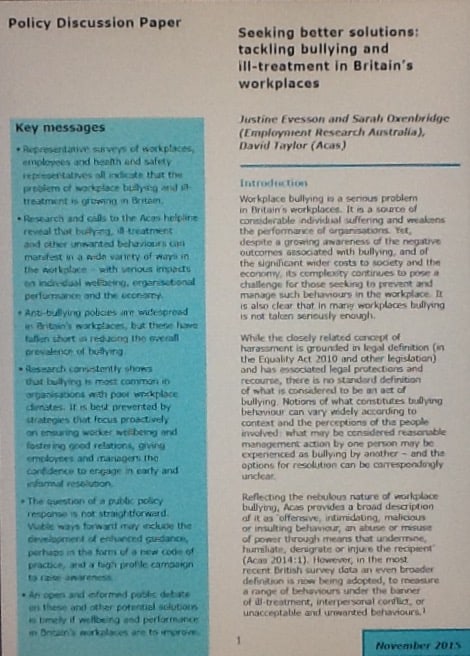Already a member? Log in here
Category: wellness
Where is work-related suicide in the Suicide Prevention Strategy?
 For all the discussion of workplace mental health, work-related suicide continues to receive little attention. Part of this is because unexpected fatalities are shocking and distressing, even more so when the deaths are the result of the worker’s own efforts.
For all the discussion of workplace mental health, work-related suicide continues to receive little attention. Part of this is because unexpected fatalities are shocking and distressing, even more so when the deaths are the result of the worker’s own efforts.
Recently the
Can OHS achieve change in a neoliberal world?
The operation of the European Union is a mystery to everyone outside the EU and to most people in the EU. Any organisation that juggles the legislation of over 20 countries has a thankless task but some of the work being undertaken by occupational health and safety (OHS) advocates provides a clarity on power relationships between employers and workers. I never tire of reading articles and editorials by Laurent Vogel of the European Trade Union Institute. Below is an excerpt from his editorial in the Autumn-Winter 2015 edition of HesaMag: Continue reading “Can OHS achieve change in a neoliberal world?”
Red tape as a force for good?
“Red Tape” is often mentioned as a scourge on business growth and occupational health and safety (OHS) is frequently mentioned. But this week on Australian radio, red tape was described as a positive. It was a peculiar comment that should be noted in the red tape debate.
On ABC Radio’s AM program on 30 December 2015, in a discussion about vaccinations, Professor Raina MacIntyre, Head of the School of Public Health and Community Medicine at the University of New South Wales, stated: Continue reading “Red tape as a force for good?”
Two apocryphal Santa safety tales
Safety Lesson 1 – Check Santa’s Constitution
As a child I lived across the road from a carpet factory. This huge factory had a wide paddock next door that, for a time, had two golf fairways and greens and a chicken farm. This paddock was the scene of the annual Christmas Party and, although my parents had no association with the factory, some of the neighbourhood kids wangled our way into the work’s Christmas Party.
One year the company chose to have Santa arrive by helicopter. We could hear the noise from some way off and a landing site in the paddock had been roped off. It didn’t take long for the noise from the children, already hyperactive on sugary drinks in a hot Australian Summer, to match the helicopter’s noise as the children ran to the roped area.
The helicopter lands, the propellers wind down as the children’s cheering increases. Continue reading “Two apocryphal Santa safety tales”
New workplace bullying report raises awareness in UK
 Recently workplace bullying gained increased attention in the United Kingdom due to media report about a discussion paper released by Advisory, Conciliation and Arbitration Service (Acas).
Recently workplace bullying gained increased attention in the United Kingdom due to media report about a discussion paper released by Advisory, Conciliation and Arbitration Service (Acas).
The report called “Seeking better solutions: tackling bullying and ill-treatment in Britain’s workplaces” is a very good summary of thinking on workplace bullying that acknowledges the Australian experience but seems to indicate that Britain remains in the early stages of tacking the workplace bullying situation after a series of false starts on the issue.
SafetyAtWorkBlog posed some questions about this paper to Dr
Bridging Health and Safety, a matter of urgency as well as good business sense?
Susan Fleming, Managing Director of Acting Consulting Training Australia attended a breakfast seminar on November 10 2015 and has provided this guest post .
“We have been shouting about safety for some time and in contrast whispering about well-being and health in the workplace. We need to address this as a matter of urgency”
 Judith Hackitt, Chair of the UK Health and Safety Executive addressed the issue of University of Western Australia Centre For Safety (UWA Centre for Safety) breakfast on 10 November 2015.
Judith Hackitt, Chair of the UK Health and Safety Executive addressed the issue of University of Western Australia Centre For Safety (UWA Centre for Safety) breakfast on 10 November 2015.
In a prudent and well-programmed session, the UWA Centre for Safety inspired good debate about the business impact the well-being of employees is having on the workplace.
